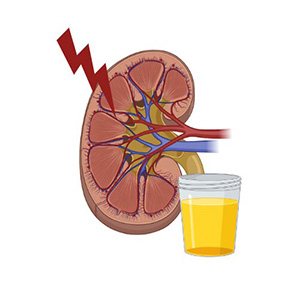Association of β2 microglobulin level and glomerular filtration rate in patients with acute leukemia after hematopoietic stem cell transplantation

All claims expressed in this article are solely those of the authors and do not necessarily represent those of their affiliated organizations, or those of the publisher, the editors and the reviewers. Any product that may be evaluated in this article or claim that may be made by its manufacturer is not guaranteed or endorsed by the publisher.
Authors
Hematopoietic stem cell transplantation is a life-saving therapy in patients suffering from acute leukemia. However, kidney complications developed after performing hematopoietic stem cell transplantation can affect the course and prognosis of the disease in patients with acute leukemia. This study is aimed at assessing the functional status of the kidneys in patients with acute leukemia who have undergone hematopoietic stem cell transplantation. The study has observed a group of patients with acute lymphoblastic leukemia and acute myeloid leukemia who have undergone hematopoietic stem cell transplantation. It has been discovered that β2 microglobulin is a sensitive method of analyzing renal function, with the β2 microglobulin threshold urine level not exceeding 0.3 mg/L. The complex diagnostics of kidney function in hematopoietic stem cell transplantation recipients has given the opportunity to identify the relationship between increased β2 microglobulin levels and decreased glomerular filtration rate. It has been determined that β2 microglobulin is a biomarker of renal disorders. The obtained data have showed that β2 microglobulin can be used as a diagnostic marker of reduced kidney function.
How to Cite

This work is licensed under a Creative Commons Attribution-NonCommercial 4.0 International License.
PAGEPress has chosen to apply the Creative Commons Attribution NonCommercial 4.0 International License (CC BY-NC 4.0) to all manuscripts to be published.






